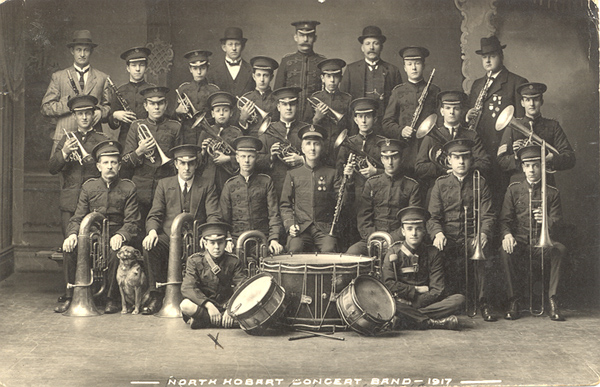 |
 |
|
Bands
Bands in Van Diemen's Land were initially military. The first civic band, the St Joseph's Total Abstinence Band, was formed in Launceston in 1845, some of its thirteen members coming from the 96th Regiment stationed there. Its most celebrated conductor, recruited from New Zealand in 1894, was the legendary Alexander Lithgow, who dominated Tasmanian band life for thirty years. After a hiatus in the 1980s, the band re-formed as St Joe's Big Band. The Latrobe Federal Band (established in 1872 as the Latrobe Brass Band) is the oldest continuously functioning brass band in Australia. Brass bands were an important part of musical life before 'wireless', offering easy access to free, live music in the open air and providing an eclectic repertoire of orchestral, theatrical and operatic medleys. This was the most popular and pervasive form of amateur instrumental music open to Australian men. Between 1880 and 1930 many small towns had their own brass band; Hobart and Launceston had multiple bands; industrial enterprises such as the Electrolytic Zinc Company had bands; and the Illustrated Tasmanian Mail provided a weekly commentary. Rivalry was fierce. Bands competed in state contests by executing elaborate manoeuvres while playing a march, with a win at the Ballarat Royal South Street Eisteddfod considered the pinnacle of success. Although the heyday of bands was pre-1930, their popularity persists – assisted by the postwar expansion of school bands, women players, less formal uniforms, and larger concert bands with more varied instrumentation. The Australian Brass Band Championships are still held annually. Further reading: W Bebbington (ed), The Oxford companion to Australian music, Melbourne, 1997; Examiner, 2 September 1995; D Madden, A history of Hobart's brass bands, Devonport, 1986; 'Tiberius', Blow, bugle, blow, Latrobe, 1988. Wendy Rimon |
Copyright 2006, Centre for Tasmanian Historical Studies |
